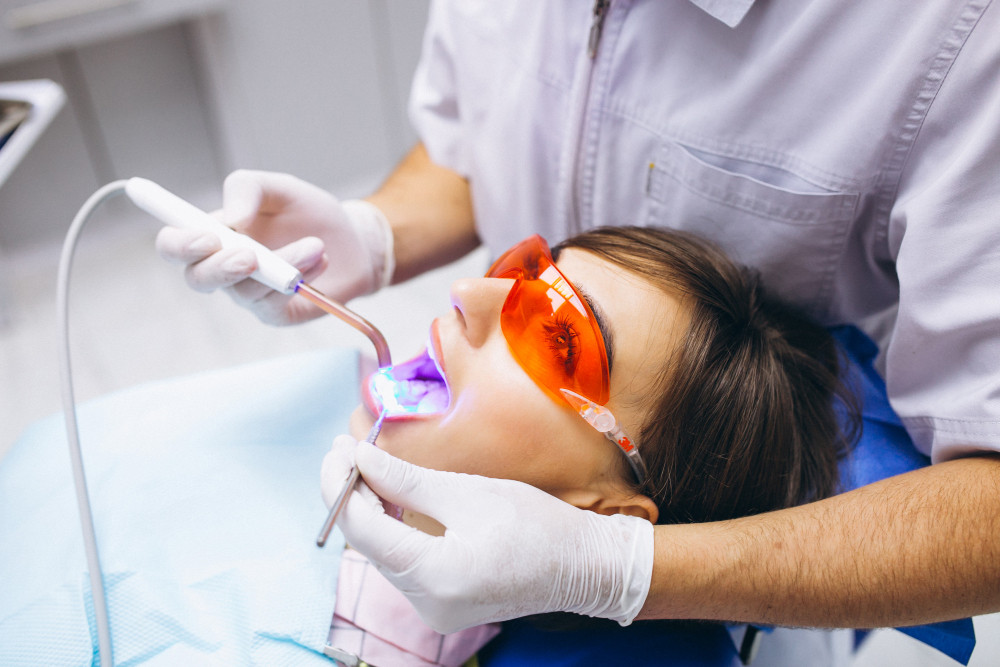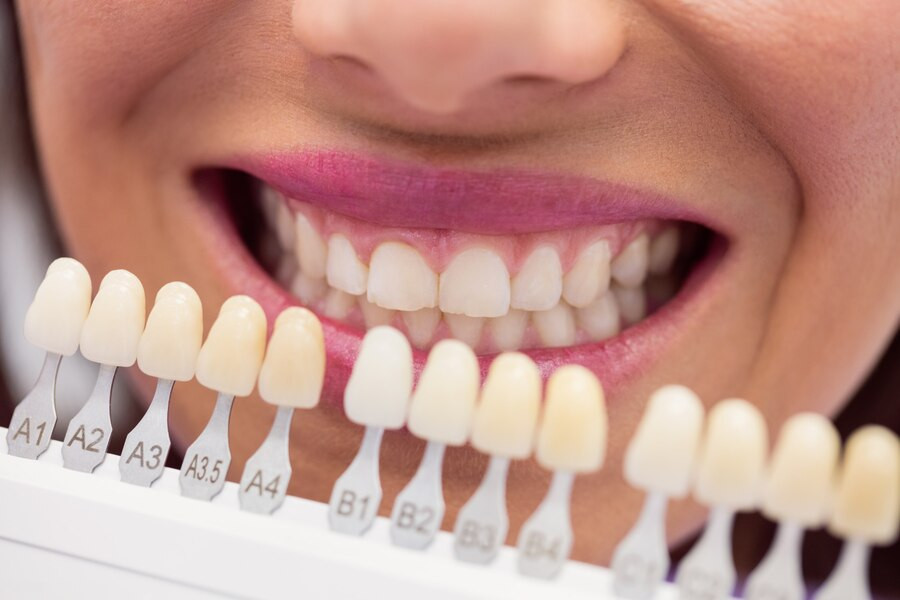Kebiasaan merokok, minum kopi dan teh dapat mengubuah warna gigi menjadi kekuningan. Untuk memutihkan atau meratakan warna gigi, Anda dapat melakukan bleaching gigi. Seperti apa manfaat dan risiko prosedur bleaching gigi? Berikut ini ulasannya.
Apa Itu Bleaching Gigi?
Bleaching gigi adalah salah satu cara memutihkan gigi menggunakan bahan kimiawi sehingga warna gigi menjadi lebih terang. Prosedur bleaching gigi dapat dilakukan dengan menggunakan bahan aktif seperti hidrogen peroksida di klinik gigi.
Prosedur bleaching gigi relatif aman dan efektif menyamakan warna gigi, namun hal ini juga bergantung dari jenis noda yang menyebabkan perubahan warna gigi. Warna hasil bleaching gigi umumnya dapat bertahan mulai dari 6 bulan hingga 1 tahun, tergantung dari jenis bahan bleaching yang digunakan dan gaya hidup sehari-hari.
Baca Juga: Bahan Alami untuk Memutihkan Gigi, Apa Saja?
Prosedur Bleaching Gigi
Prosedur bleaching gigi umumnya dilakukan di klinik dokter gigi, namun Anda juga bisa melakukannya di rumah menggunakan pasta gigi khusus. Secara umum prosedur bleaching gigi dapat dibedakan menjadi berikut ini:
Bleaching gigi di klinik dokter gigi
- Sebelum dilakukan proses bleaching, dokter akan mengikis plak dan kotoran yang menempel pada gigi.
- Kemudian dokter akan memasang retraktor agar bagian bibir tidak mengenai pemutih
- Dokter mengoleskan gel hidrogen peroksida dengan konsentrasi tinggi lalu disinari dengan laser untuk mengaktifkan zat peroksida
- Lapisan tersebut akan didiamkan selama 30-60 menit kemudian akan dioleskan kembali sesekali
- Setelah selesai, retraktor dilepas dan gigi dibilas untuk membersihkan sisa pemutih
- Dokter akan mengoleskan fluoride untuk mengurangi efek samping bleaching
Bleaching gigi di rumah
Untuk melakukan bleaching gigi di rumah, Anda bisa melakukannya dengan membeli satu set pemutih gigi. Biasanya alat ini berisi gel yang dioleskan ke gigi menggunakan sikat atau alat lainnya. Cara yang dilakukan umumnya tidak jauh berbeda dengan prosedur bleaching gigi di klinik dokter gigi.
Pertama, gunakan refraktor agar lebih mudah mengoleskan zat pemutih pada gigi. Kemudian oleskan zat pemutih pada gigi dan pasang pelindung mulut. Beberapa produk memiliki sinar UV dalam pelindung mulut agar zat pemutih dapat bekerja maksimal.
Meskipun mudah dilakukan di rumah, namun konsentrasi zat pemutih gigi umumnya lebih rendah dari yang bisa diberikan oleh dokter gigi. Oleh karena itu Anda mungkin perlu melakukannya 2-3 kali hingga mendapatkan hasil yang diinginkan.
Baca Juga: Manfaat Menggunakan Dental Floss (Benang Gigi) Secara Rutin
Manfaat dan Efek Samping Bleaching Gigi
Prosedur bleaching gigi menghasilkan gigi yang lebih putih cemerlang sehingga membuat Anda lebih percaya diri. Pemutihan gigi juga dapat menghapus noda di gigi dan mengurangi pertumbuhan bakteri sehingga rongga mulut menjadi lebih sehat.
Untuk mendapatkan hasil maksimal, sebaiknya lakukan bleaching gigi di klinik dokter gigi terpercaya. Usai melakukan bleaching, dokter dapat melakukan pemeriksaan atau perawatan tambahan untuk menjaga hasil belaching lebih tahan lama.
Prosedur bleaching gigi merupakan prosedur yang aman dilakukan, namun prosedur ini dapat menimbulkan sejumlah efek samping seperti berikut:
- Sensitivitas gigi. Gigi Anda mungkin menjadi lebih sensitif setelah proses bleaching. Seiring waktu, rasa ngilu pada gigi akan berkurang. Dokter gigi Anda dapat menyarankan pemakaian produk yang mengandung gel kalium nitrat dan natrium fluorida untuk meredakan sensitivitas gigi.
- Iritasi gusi. Anda mungkin juga dapat mengalami iritasi gusi. Hal ini biasanya disebabkan oleh adanya kontak pada gusi dengan produk pemutih tersebut. Efek samping ini akan hilang setelah perawatan selesai.
Bleaching gigi merupakan salah satu cara untuk mendapatkan warna gigi lebih putih cemerlang. Agar hasil bleaching tahan lama, sebaiknya kurangi kebiasaan merokok dan minum kopi atau teh. Jika memiliki pertanyaan seputar proses pemutihan gigi sebaiknya konsultasikan ke dokter atau gunakan fitur konsultasi pada aplikasi Ai Care.
Mau tahu tips dan trik kesehatan, pertolongan pertama, dan home remedies lainnya? Cek di sini, ya!
- dr. Monica Salim
NHS. Teeth Whitening. Available from: https://www.nhs.uk/conditions/teeth-whitening/
Fries, C. (2023). Teeth Whitening and Bleaching. Available from: https://www.webmd.com/oral-health/teeth-whitening-and-bleaching
Watson, K. (2022). How Does Teeth Whitening Work?. Available from: https://www.healthline.com/health/how-does-teeth-whitening-work
Cleveland Clinic. (2019). Is Teeth Whitening Safe?. https://health.clevelandclinic.org/is-teeth-whitening-safe/
Silver, N. (2018). Teeth Whitening Options and Safety. Available from: https://www.healthline.com/health/is-teeth-whitening-safe











